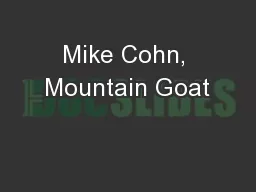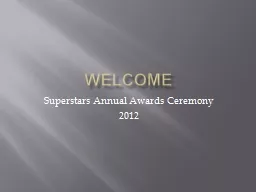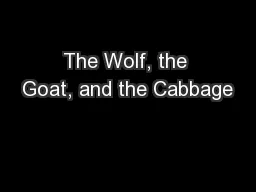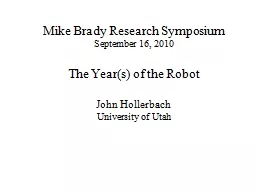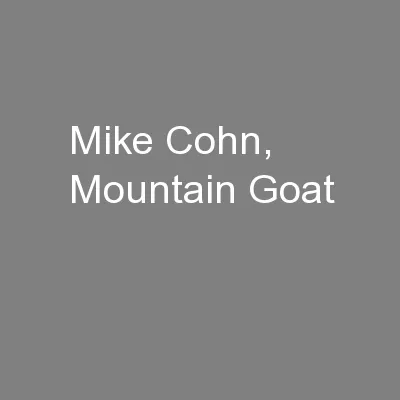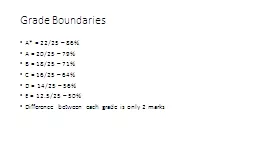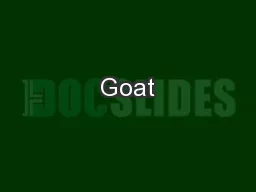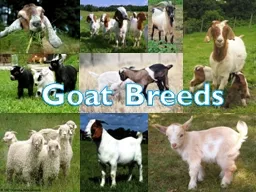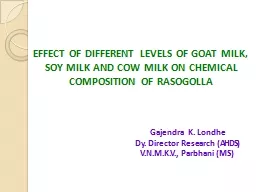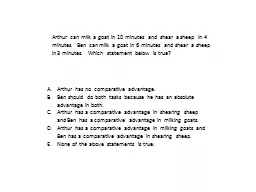PPT-Mike Cohn, Mountain Goat
Author : lois-ondreau | Published Date : 2018-10-25
Adapted by Rick Mercer Then me By Scrum Overview We re losing the relay race Hirotaka Takeuchi and Ikujiro Nonaka The New New Product Development Game Harvard
Presentation Embed Code
Download Presentation
Download Presentation The PPT/PDF document "Mike Cohn, Mountain Goat" is the property of its rightful owner. Permission is granted to download and print the materials on this website for personal, non-commercial use only, and to display it on your personal computer provided you do not modify the materials and that you retain all copyright notices contained in the materials. By downloading content from our website, you accept the terms of this agreement.
Mike Cohn, Mountain Goat: Transcript
Download Rules Of Document
"Mike Cohn, Mountain Goat"The content belongs to its owner. You may download and print it for personal use, without modification, and keep all copyright notices. By downloading, you agree to these terms.
Related Documents

